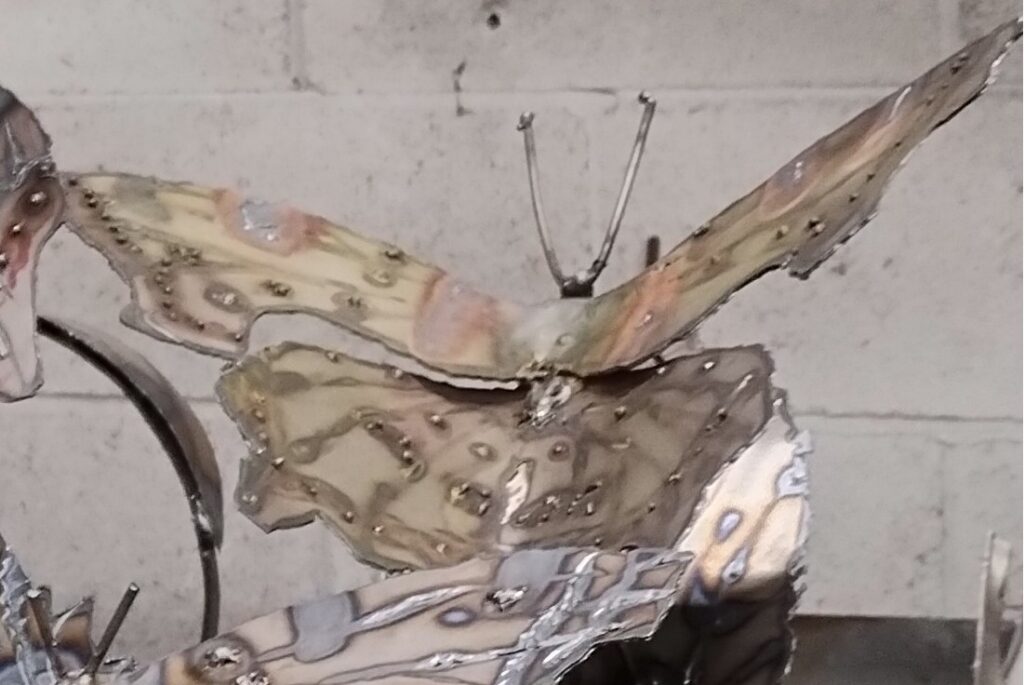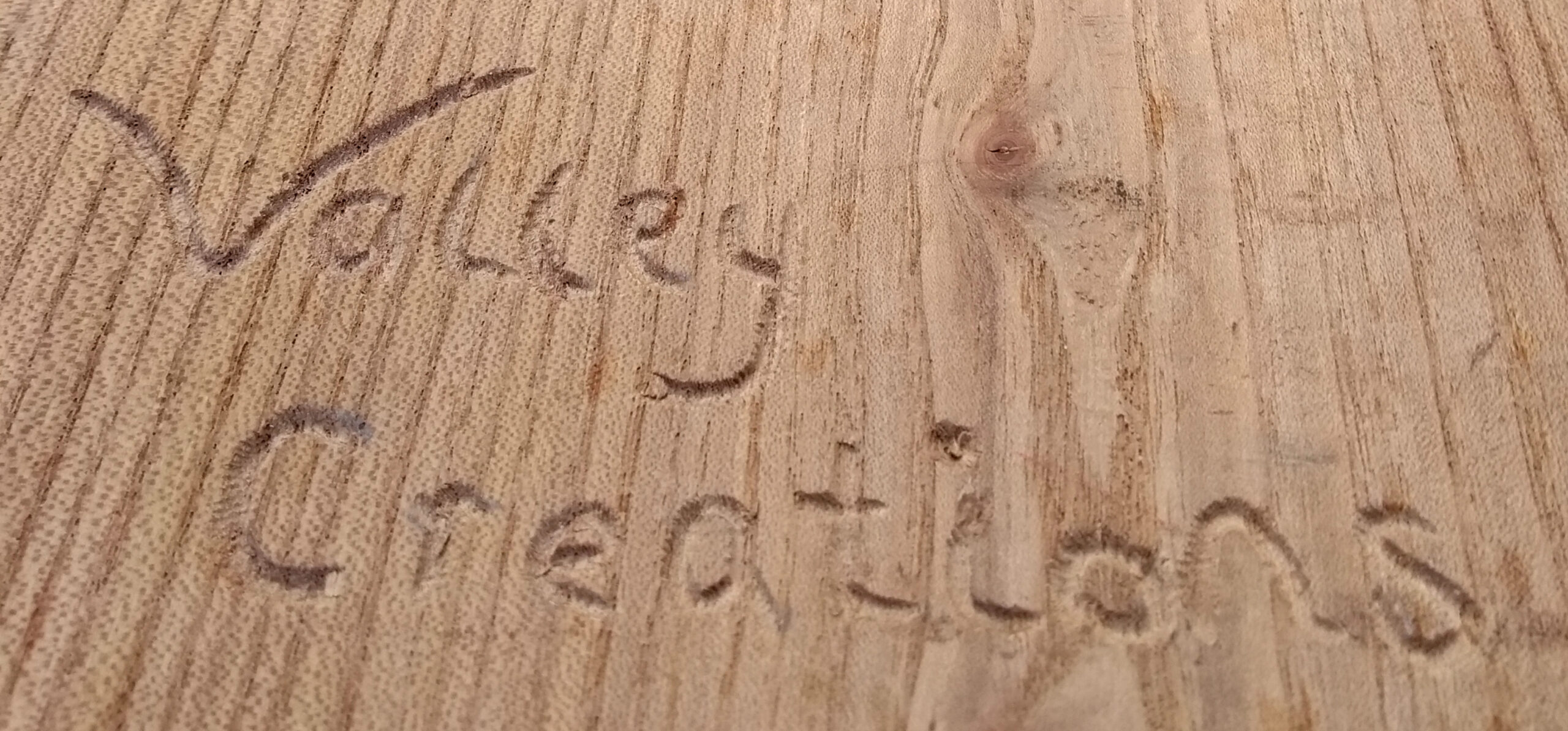I’ve just hired time in David Mayne’s sculpture studio to realise a dream I didn’t really know I had. I’ve often told visitors to Yorkshire Sculpture Park about people metaphorically patting me on the head for sculpture I made when I was 16 and then looking around at the professional SCULPTURES. I couldn’t see how I could move into that world and moved on.
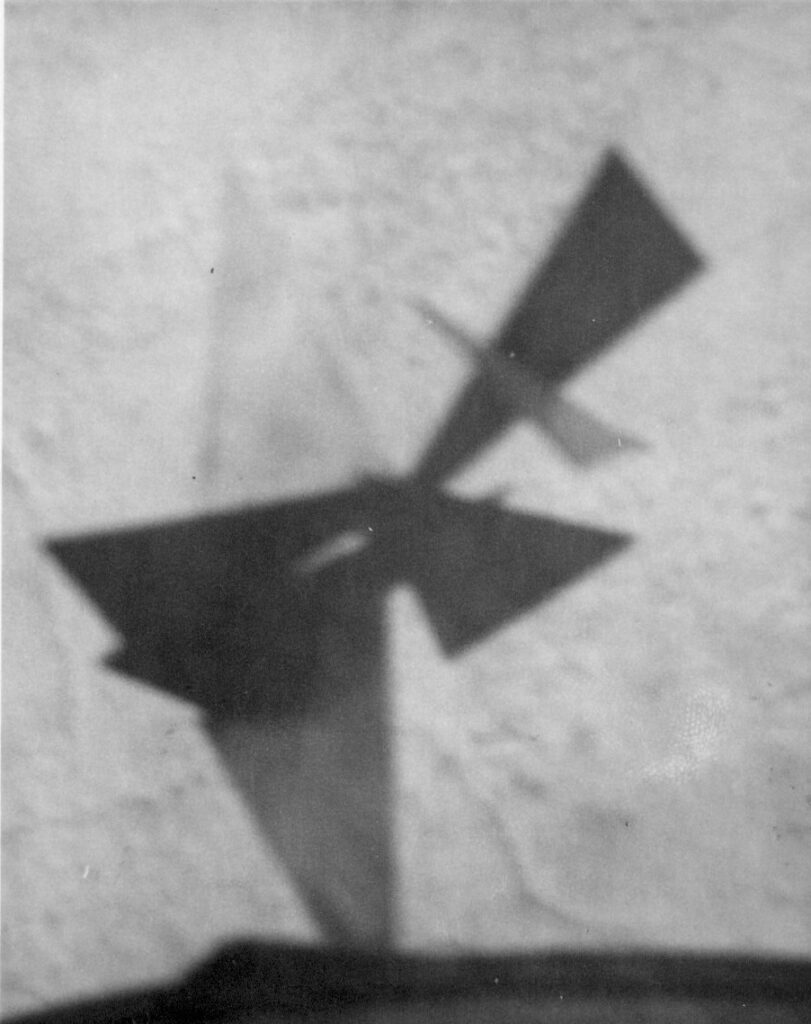
After making a few metal sculptures in recent years, I had a vision of making up a group and decided to indulge myself.
I’d recently made two butterflies based on the Ringlet and they seemed to please others as well. One of them was left by its new owner to quietly oxidise by itself which will look more like the Ringlet, which is brown. After installing the second and looking at the way the light worked on it, I decided to experiment with putting a weak mixture of yellow ochre and linseed oil on the butterfly and sap green in the case of the leaf. That has worked well, changing the subtle effects of the heat worked markings and slowing the ageing process but not stopping it and not having an enameled surface that will later flake.
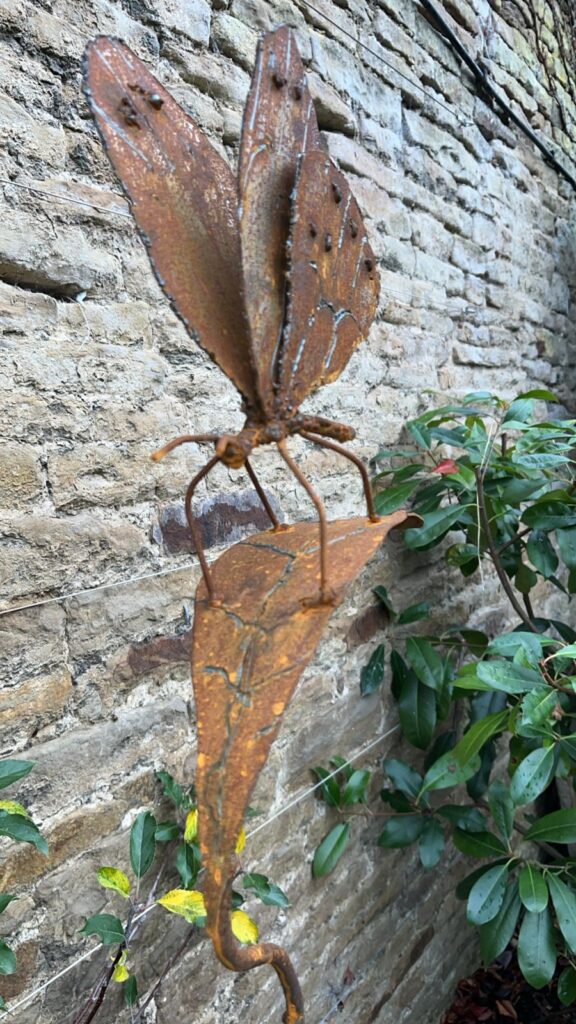
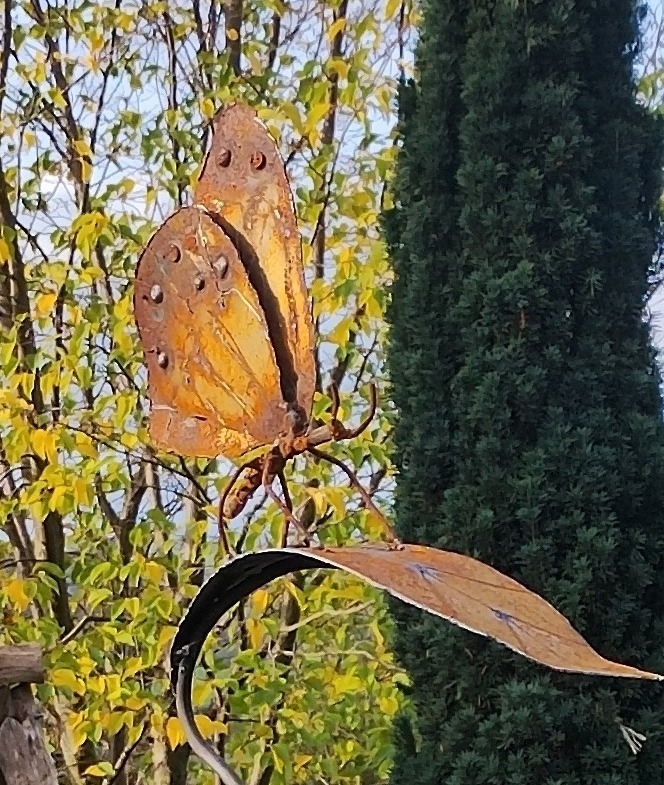
I decided to do a set of ten based on the Ringlet again and also the Comma. Here is the result grouped in the corridor at The Sculpture Lounge.
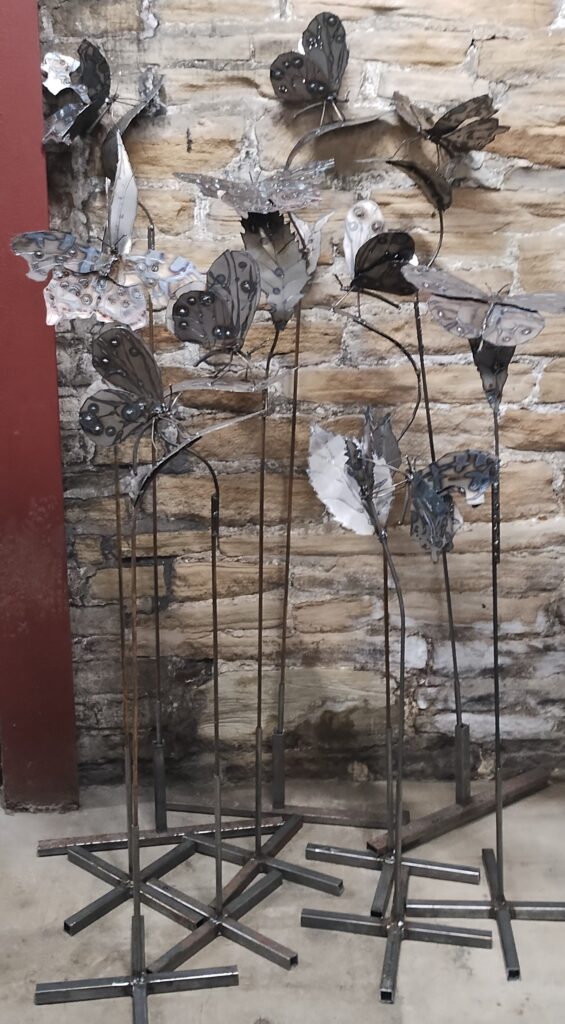
The stands allow them to be displayed on a flat surface, where they can be bolted down if required. Equally they can stand on soil and the rod goes through the stand to anchor further into the soil. Tent pegs can also be used with the cross pieces (we live in a windy garden).
Here is a shorter one in the flower bed by our kitchen. The leaf is temporarily yellow with some oil paint and the sun. It will slowly change colour.
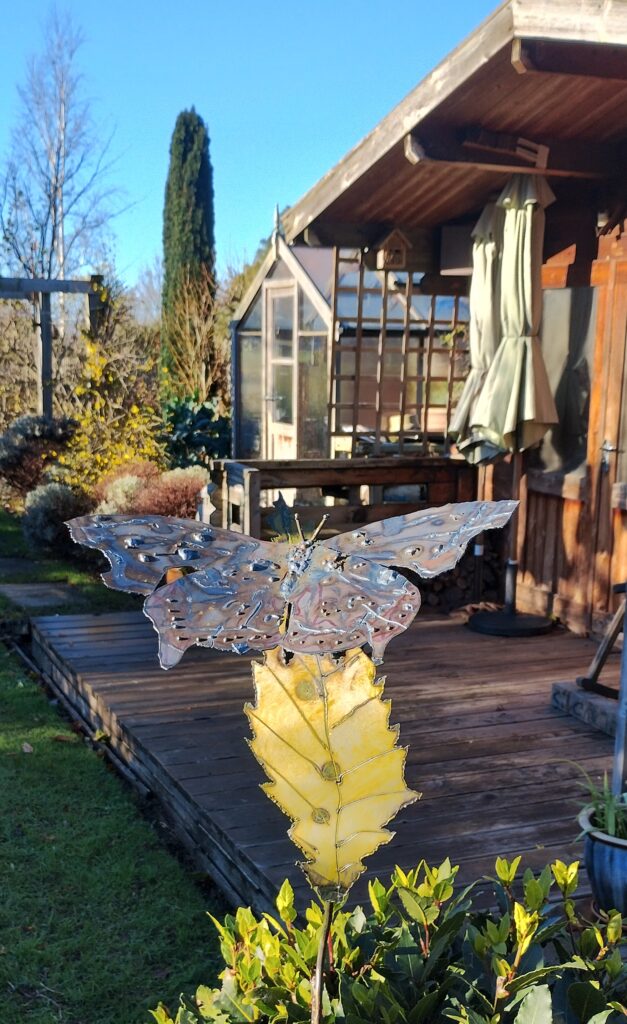
Unlike the Ringlet, the Comma is quite bright yellow or orange on the upper side of the wing. The lower side is dull and brown, so that they look like a dead leaf when the wings are closed. Clever eh? I have started patination experiments on the same lines to give a gentle aging and earlier colour indication.
